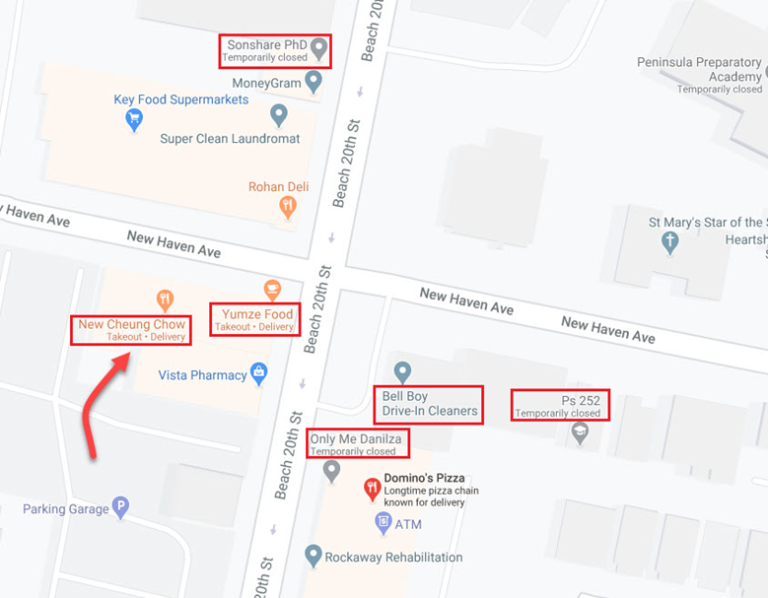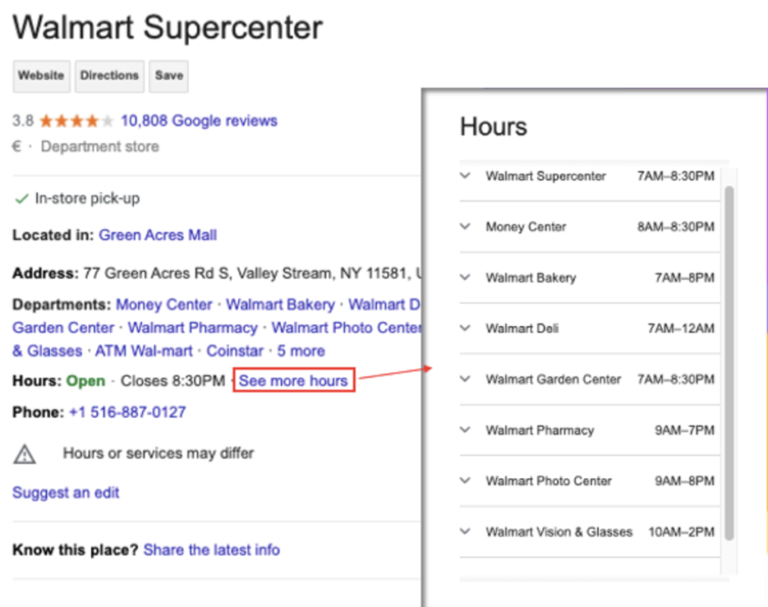Local SEO, 12 suggestions to dominate SERPs and Map Pack
In the last year the Web has overcome many of the limitations to daily activities, and it is no coincidence that searches with the key “near to me“, “nearby” or “near me” are practically doubled: Today more than ever, being visible in search engine results pages is crucial, especially for companies that have physical locations. The pandemic has changed the way we do business and consumer information needs have increased, so optimising the brand’s presence in local search is critical to generating sales and reaching new customers.
Tips to emerge in local SEO
Restaurants, retail stores and other types of local businesses have many potential customers looking for their products and services, and Google SERPs are constantly evolving to show these results to interested users.
The latest news is being tested these days: in the United States, in fact, has debuted a feature integrated in the local panel of search results that allows the user to view the estimated cost for home renovation interventions, thanks to a partnership with Homewyse (the independent and fact-based reference for estimates of products, installations and services for the home).
For commercial activities, therefore, it is crucial to have optimized local lists and an effective local marketing strategy that knows how to measure the success of work, and Winston Burton’s article in Search Engine Journal presents 12 local search tactics to be used to help a company improve its visibility in local Serps.
- Consistently managing information
The first point is to manage in a consistent and accurate way all the ads, verifying the correctness of the NAP (name, address and telephone number, without forgetting the URL of the home of the site) in the various places where they appear, that is search engines and local directories, trying where possible to remove duplicate lists.
To simplify this work you can use a platform of local search among the many on the market.
- Using structured data
Structured data is important to help Google better understand content and can help increase clicks, impressions and conversions, and this also applies to local search.
It is therefore absolutely important to “implement types of structured data such as local business, geocoordinates, postal address and reviews (which allow reporting local activity, geographical coordinates, postal address and reviews) to improve performance”.
- Taking advantage of Google My Business
“If you’re not using and optimizing your Google My Business profile, you’re missing an incredible opportunity to make your products and services visible where it matters the most,” the author points out.
To optimize the Google My Business tab you must first enter all the information that you can include, in addition to photos, menu items, descriptions and service lines”, which is one of the most important aspects of local search optimization, dedicating time to fill in all the relevant information, such as the menu, the description of the products and so on, frequently monitoring the form to verify that the information is always up to date.
This is even more true in these periods of “imposed” limitations and times, because providing incorrect information can generate a bad user experience – for example, if you find a closed shop when the GMB card instead signaled it open, the customer may decide to go elsewhere in the future.
Today it is crucial for companies to update local research results, to communicate clearly to potential customers who are temporarily closed or who offer particular services, such as the possibility of takeaway for restaurants, also because Google started to show the attributes of the operating status of the store within Maps.
Large retailers with multiple departments in the store can use GMB to include secondary timetables; this function can be used to update, as appropriate:
- Department hours.
- Senior hours.
- Drive-thru schedule.
- Delivery times.
- Takeaway hours.
- Visiting hours.
- Pick-up hours.
Do not forget to update the questions and answers within the GMB company profile with relevant or timely details, such as:
- Closures or time changes.
- Cancelled events and refunds/changes of tickets.
- Volume of calls/e-mails and expected delays.
- Changes to appointment procedures.
- Measures implemented to increase the level of health and safety.
- Changes to the services offered.
In the Google area, e-commerce brands should take advantage of a new Google feature – See What is in your Stores or SWIS – that literally allows you to see what is in your stores thanks to a real-time integration of the inventory into the Google My Business profile.
In this way, a large number of potential consumers can be intercepted “who search for your products and services every day, allowing them to see the inventory in the store in a paid product tab among Google properties, including Images, Shopping and Maps”.
- Updating the status of events
Almost exactly a year ago the new version of schema.org debuted and, among other things, introduced new structured data to report the status of the events: using this tool is very important to allow users to know the current status of the event they are interested in.
Eventstatus attributes include:
- EventCancelled, to report that the event has been canceled.
- EventMovedOnline, to indicate that the event has been moved to online streaming mode.
- EventPostponed, when the event has been postponed and the new dates are still to be defined (TBA).
- EventRescheduled, if the event has been rescheduled to a new date.
- EventScheduled, when finally the event is still scheduled as planned, with no changes.
Event information can be entered into the company profile via the event schedule on the website or from external sources such as Facebook, Eventbrite and Meetup events.
- Checking the lists
Burton reiterates that it is crucial to always monitor the search results associated with the brand, in particular to identify:
- Automatic operational status updates (“Temporarily closed” and others).
- Pending or suggested changes to operating hours.
- Pending or suggested changes to attributes.
- Changes pending or suggested to the activity details.
- Any other indicators of pending or suggested updates.
- Deactivated ads.
- Managing reputation
Online reputation management is crucial to rank high in the local Map Pack, and so you have to work to attract positive reviews and provide good customer experience; in particular, you should avoid leaving unanswered questions or user feedback, because it is a really negative signal.
People, in fact, trust the reviews and the negative ones are worse when the owner does not take the time to answer; if instead he manages to provide an explanation, this intervention “potentially increases the confidence of other users and could also help generate more business”.
Therefore, the advice is to always check and respond to reviews, both positive and negative, and focus on getting natural and not required reviews, also taking advantage of the website to upload first-party reviews.
- Using hyper-local content
The goal of SEO is to provide a positive content experience across all devices and platforms to help end users meet their information needs.
In SEO local this can mean trying to publish quality and unique content, suitable for individual locations related to business: this hyper-local content can help to improve visibility among potential customers who are nearby.
Useful is also the use of hyper-local terms in the optimization strategy on the page, optimizing that is heading, titles, metadata, alt-text and text, as well as always having content related to COVID: all this can create “trust from the end user’s point of view and will also help you get great reviews”, because “proving that you are taking the right precautions can actually help you sell more products and services when customers come to pick up food or shop in the store”.
- Using messaging systems to always stay connected with clients
Using an always-on messaging system to keep in constant contact with customers is a way to increase their trust and respond in real time to their needs.
A practical way to get it is to download the Google My Business app and activate the integrated messaging, which will allow customers to reach the activity: in cases of unavailability to phone calls or in times outside working hours, messaging can help customers get the assistance they need anyway.
- Monitoring trends
Closely monitoring Google Trends can help you understand changes in your search interest and behavior related to keywords and topics relevant to your brand and industry. The next step is to analyze the most valuable keywords for your business and observe how the searches are going for those articles, and then again check the site’s performance, so as to understand what are the conversions of users during this period and update the forecasts and relationships in order to take into account the impact of COVID-19.
- Ooptimizing for vocal search and mobile devices
“We live in a world where users constantly ask questions and your brand should provide the answer even when consumers ask a digital assistant,” says the author, who recalls how the site should also “be well optimized to provide answers to common questions about products and/or services”.
To optimize content for voice search and suggestions on what to include, you can first observe internal search metrics and analytics to see what common questions people ask about the activity, possibly using third-party tools and the Google People Also Ask (PAA) feature.
And “because most local queries are on mobile devices“, it is important that the site is optimized for mobile devices with high-quality images, content and fast loading times.
- Tracking rankings and building local landing pages
“Rankings aren’t everything, but they can help you track the success of your local search campaign at the location and postal code level,” stresses Burton, who recommends “create local landing pages that offer a good user and page experience, including responsiveness, fast loading times, the latest schema code base, call to action and design elements”.
All this can help the brand to position itself in all locations and improve conversions.
- Links are always important
The last tip refers to one of the “cornerstones” of the SEO, namely getting high quality links from sites, blogs, local and general publications, because these links “from reliable sources with good content can help users solve problems and create trust and credibility” towards their site.
Links are still a very important factor that can improve the visibility of the site and brand and help to strengthen the presence in local research, a more important element than ever given the competitive SERPs nowadays.
Being visible to win consumers
Consumers are looking for brand-related products and services, so being visible is the only way to intercept their needs and win over new customers.
With the 12 suggestions of Winston Burton you can optimize the work to reach the peak of the SERP and dominate the local results.




